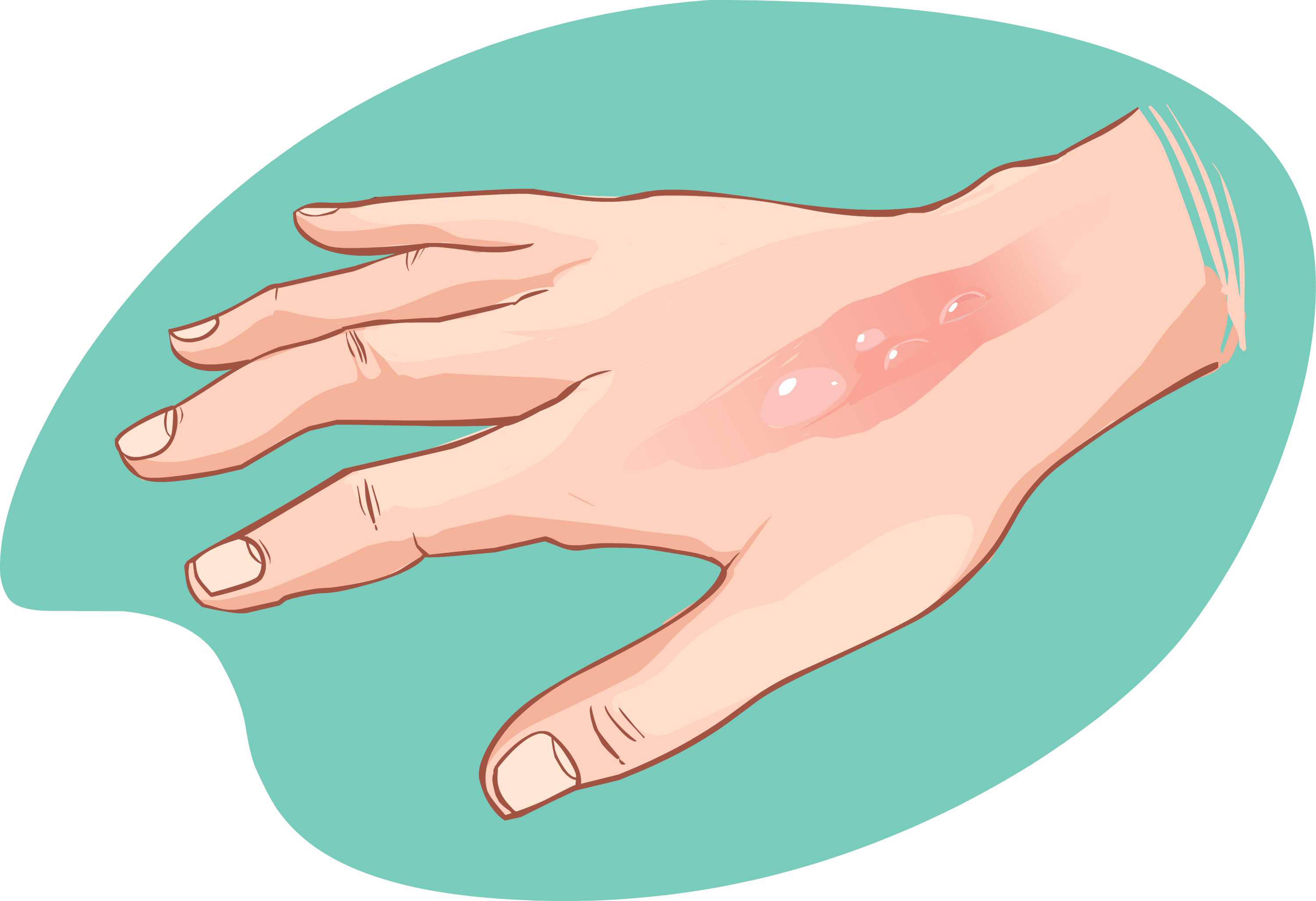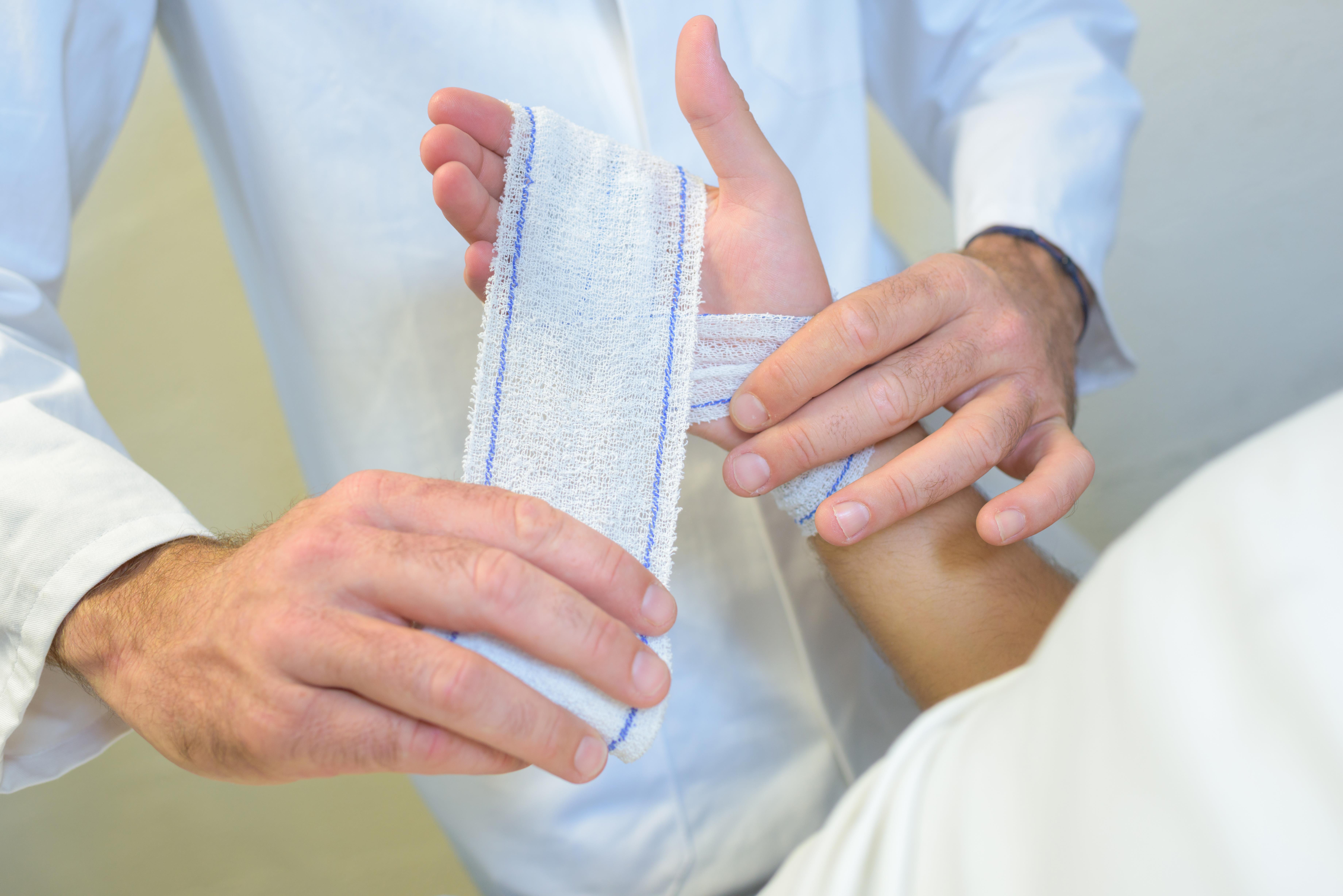
Types of Burn | Treatment | Burn Dressings | Scarring
Burns can be a painful and dangerous type of wound. The type of treatment is dependent on the degree of the burn and the depth of damage in the tissue. Once the type of burn is determined, the correct course of treatment will lead to healing and, most importantly, less pain for the burn victim. In all cases of burns, infection is a significant concern. Therefore, the first step in treating burn wounds is determining the type of burn.
A first-degree burn is the least serious in which only the outer layer of skin is burned but not all through. This skin is usually red and may contain some swelling. Pain is generally associated with this level of burn. These burns are treated as minor unless they cover a significant portion of the feet, hands, face, groin or buttocks, or a major joint.
A second-degree burn is when the outer layer of skin is burned through, and the second layer (dermis) is injured. In this instance, blisters will develop, the skin will take on an intensely reddened, splotchy appearance, and severe pain and swelling will occur. If a second-degree burn is less than 3 inches in diameter, it can be treated as a minor burn. Anything more prominent, or if the burn is on the feet, hands, face, groin, buttocks, or over a major joint, should be treated as a major burn.
These burns involve all layers of skin and cause permanent tissue damage. Fat, muscle, and bone may all be affected. Areas may be charred black or appear dry and white. These are significant burns and should be evaluated and treated immediately.


Emergency medical help should be called immediately, but until medical help arrives, some treatments can be followed.
Large severe burns should not be immersed in cold water. This can lead to a drop in body temperature (hypothermia) and deterioration of blood pressure and circulation (shock).
Check for signs of circulation, breathing, or movement. If there is no breathing or a pulse, begin CPR.
The burned body parts should be elevated above the victim’s heart and covered with a moist sterile bandage or a clean damp towel.
Sterile Gauze: These bandages should be applied to minor wounds. Make sure to use sterile gauze to minimize the risk of infection. Elastic gauze is also available, but care should be taken not to wrap the burned area too tightly. Some gauze dressings incorporate a hydrogel to help prevent infection and promote healing.
Silver Dressings: “Silver” cream dressings (Silvadene) discourage bacteria growth and encourage healing. After approximately one week, fluid and dead skin should be gone, and a regular bandage (gauze) should be applied. Wounds treated with synthetic skin seem to heal faster than those treated with silver dressings.
Non-Adhesive Dressing: Non-adherent dressings have a soft silicone that covers the wound without adhering, minimizing pain and discomfort with dressing changes. They incorporate a moist layer (usually a silver-based cream) to keep the wound moist and promote healing. Wound depth will determine the choice of dressing; however, inappropriate dressings can cause delayed healing, pain, and discomfort.
While proper dressing is critical to quickly healing burn wounds, it does not always guarantee scarring. First-degree burns are less likely to scar. However, scarring is inevitable if appropriate care is not taken during the treatment.
Shop Wound Care offers effective and pocket-friendly products to treat burn wounds. Buy from experienced manufacturers and get the best online shopping deals. Order Today!
Disclaimer: All content found on our website, including images, videos, infographics and text were created solely for informational purposes. Our content should never be used for the purpose of diagnosis or treatment of any medical conditions. Content shared on our websites is not meant to be used as a substitute for advice from a certified medical professional. Reliance on the information provided on our website as a basis for patient treatment is solely at your own risk. We urge all our customers to always consult a physician or a certified medical professional before trying or using a new medical product.